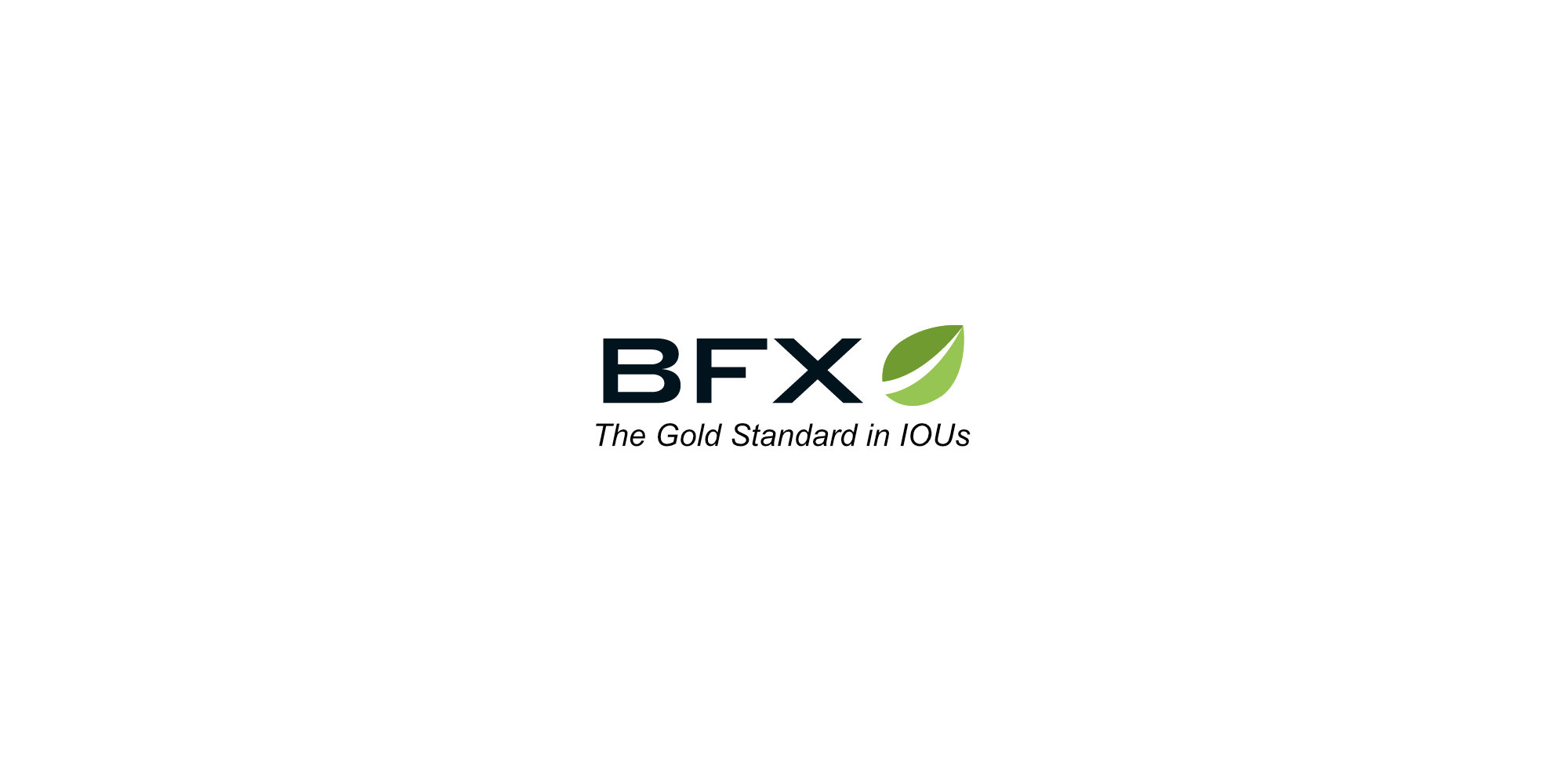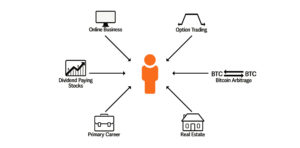
by John | Jan 15, 2017 | Learning from Mistakes, Monthly Income, Passive Income
Bitfinex was hacked back on 2 August 2016. About 36% of Bitfinex holdings were stolen. All Bitfinex account holders took a 36% loss and were issued one BFX token for each dollar-equivalent in value that was lost.
BFX tokens are basically “IOUs” specific to Bitfinex. I was issued the 313 BFX tokens since I had lost 313 dollars.
BFX tokens were then made tradable and the price plummeted from a 1 to 1 parity with the dollar down to a fraction of a dollar.
This enabled folks to close their BFX tokens and get some of their money back immediately. Or they could choose to hold onto the BFX and wait for Bitfinex to raise capital to make good on these IOUs.
I was fairly upset for a while about this hack and my loss. I withdrew the remaining 64% of my holdings from Bitfinex and I didn’t login to Bitfinex for a while.
But one of my readers informed me that he was going to be investing some more money in margin funding at Bitfinex and that got me interested again.
Plus I still had 313 BFX tokens sitting in my account.
BFX Redemptions are Slow
About a month after the hack, in September 2016, Bitfinex started redeeming BFX tokens for dollars at a 1 to 1 parity. They essentially began making good on the IOUs they’d given out.
I received $17 in BFX token redemptions between 1 September 2016 and 7 January 2017. Bitfinex most recently redeemed 2% of all outstanding BFX tokens on 10 January.
I calculate that if it took four months to get $17 back it will take over six years to get the rest back.
Because the rate of redemption is so slow I sold my BFX tokens for dollars at a rate of .55 USD per token.
I’ve started margin lending using these dollars.
Why go back to Bitfinex after their security breach cost me 36%?
My thought process is that Bitfinex was hurt so much by the last hack that they are hyper-vigilant now. They’ve implemented additional security features such as two-factor authentication and offline, cold wallets.
Bitfinex is the only game in town I’m aware of that allows users to do margin funding.
And I want to recoup my losses. As of writing the “Flash Rate of Return” for margin funding is .07% per day. So based on my calculations I should be able to get back to $313 in about 3.5 years.
That is assuming the FRR stays at or above .07% per day. Hopefully it goes up.
Bitcoin is Volatile

Bitcoin Price Projection Diagram
I think margin funding is a great way to take advantage of the popularity of Bitcoin without the exposure to BTC price fluctuations.
BTC is volatile which is something that traders like.
In January Bitcoin started around $950 went up over $1,100, then back down to roughly $800.
Do These Price Fluctuations Matter?
If I believed Bitcoin was a great long term holding I don’t think I would care about these price fluctuations. A big run-up would be a time to take some money off the table and a big drop might be a time to increase my holdings.
Some people like holding BTC and believe it will go “to the moon” but I am somewhat skeptical of Bitcoin as a currency and I don’t know that BTC will be valued higher 10 or 20 years from now than it is today.
I prefer gold over Bitcoin because it has a 3,000 year history of being valued; but as I’ve said before, you can own both (I do). I just choose to own much more gold than Bitcoin.
I still like Margin Funding
By being a margin lender (in my case with USD) I’m not exposed to Bitcoin price changes and there is a set rate of return each time funds are lent out. From a market perspective there is no BTC price risk.
There is USD debasement risk. But the main risk, as I learned, is hacks.
There is also counter-party risk but I believe Bitfinex to be a reputable company.
Of course I wish they had better security so they never got hacked in the first place but I think they handled the situation fairly well and have taken a lot of steps to increase security.
It is too bad for that folks in US are not eligible to buy BFX tokens (if I recall correctly they were selling for .33 USD at one point and are now at .59, that would have been a good trade).
Citizens of the land of the free were also not eligible to partake in the BFX token-for-equity-programs–onerous US regulations are to blame for these restrictions.
I discuss the benefits of margin funding in more detail in my article Margin Funding to Generate Passive Income. I do think that it is a market-safe way to grow wealth, but the risk of future hacks is not something to be taken lightly.
If you do decide that signing up for a Bitfinex account is right for you, use this link: Bitfinex.

by John | Oct 16, 2016 | Active Monthly Income, Geopolitical Risk Protection, Monthly Income, Passive Income, Saving Money
In my culture there is an old adage: “Don’t put all your eggs in one basket.” It’s a quaint agrarian saying that captures a great deal of wisdom.
This principle applies most directly to savings and asset allocation. Savings are key but today I’m writing about income.
 When it comes to income the expression is don’t have all your eggs come from one chicken.
When it comes to income the expression is don’t have all your eggs come from one chicken.
In truth many people have almost no income diversity.
To stretch the analogy way to far: most workers have access to one chicken and in exchange for their work they get a small portion of the eggs the chicken lays. If the chicken stops laying eggs or the person who owns the chicken doesn’t want want or need a worker anymore, then the workers go hungry until they can find access to another chicken.
They have their job (and little to no savings or maybe a little to a lot of debt) and that’s it.
If they lose their job and can’t find another one they are in a very bad place. Without a job many people can’t service the debts they have, they can’t pay for their basic needs, it’s a hot mess. An emergency fund and savings are helpful but I was unemployed for 100 days and it was stressful even though I do have savings!
Unless you’re self employed you don’t own your job and can be let go even if you work hard and do a great job!
Losing a job happens all the time. A company gets bought and people get laid off. “My boss is a jerk and I can no longer stand to work for her.” The industry you’re in collapses. Dollars don’t buy as much and a raise doesn’t cover the difference.
Even if you are gainfully self-employed the market you’re in could contract and squeeze your earnings.
Multiple Income Streams
Multiple income streams, income diversification, it means not keeping all of your income “eggs” coming from just one chicken.
 Multiple income streams provides strength and security. If one has multiple streams of income and lives below their means it isn’t a big deal if one of the income streams stops.
Multiple income streams provides strength and security. If one has multiple streams of income and lives below their means it isn’t a big deal if one of the income streams stops.
If all of your income comes from your job, and you lose your job for any reason, you have to rely on any savings you have until you find another job.
But if you have income from 4 sources and one of them stops yielding; you’re still getting a large percentage of your income.
Going out and getting four full time jobs is probably not possible. I know I’m only one person and can’t be two places at once and there are only so many hours in the week.
Right now my day job is the main engine that drives my economic wagon. But I’m saving money so that won’t always be the case.
I continue to develop additional income streams including ones that make money even while I sleep. Some of the areas I’m capitalizing on are: dividend paying value stocks, bitcoin arbitrage, and trading options. While option trading is somewhat active during regular business hours (unless you place good till cancelled limit orders in the morning or evening), the others can be done with little time outside normal working hours.
I do still want to get into real estate (rental property) that has been on hold until I’m more established in my new career.

It’s popular to talk about diversity and diversification, but when it comes to income the norm seems to be getting one job and working there for a long time. That isn’t always possible, practical or prudent in “today’s economy.” Branching out into multiple sources of income provides most financial resilience and security.

by John | Oct 6, 2016 | Learning from Mistakes, Monthly Income, Options
Below is a summary of the option trades I closed in the month of September.
If you’re not familiar with stock options you might first read my introductory article Get Started Trading Options.
Monthly Trade Summary
September was a tough month. In total I lost $602.03. My win rate was 69% (9 out of 13). I had a total of 19 positions throughout the month: 9 of my trades were profitable, 4 were not, and 6 were “wash” trades. If I gain or lose less than $20 I count it as a wash and don’t use it to calculate my win rate.
My account is about $10,000. Some of my margin usage includes other options trades not listed here because they are made based on the trades placed by Kirk DuPlesis over at OptionAlpha.com and I am not going to post those out of respect for his paid service. I’m also NOT including any profits or losses from the OptionAlpha trades I make.
Again, the trades listed below are MY trades closed out in the month of September.
What I learned from losing $600
You can often learn more from mistakes than successes. It’s easy to Monday morning quarterback with the benefit of hindsight. I like to evaluate my trades based on what I knew at the time and what I reasonably could have foreseen.
I learned/reinforced several valuable lessons. In fact if I had followed the rules I know I need to follow to be successful and I had been more careful that $600 in losses would have been ~$70 in gains.
I want to talk about my three mistakes and the three lessons I learned from each.
Lesson One: Small Position Size
“Bears make money and bulls make money. Pigs get slaughtered.” – Old Wall Street Adage
Novavax (NVAX) Strangles
Notes: My biggest mistake was with NVAX. I made $104 earlier in September but I counted this as a separate position because I completely closed out the previous position and opened this new one.
The reason volatility for NVAX was so high was because the company was awaiting “phase three trial judgment” for a vaccine they were making. The results of the trials were unfavorable and the stock tanked down to around $1.25 from $8.25. In other words the stock lost 80% of it’s value in one day.
I would have been fine if I hadn’t opened the additional 9 8 strangle because it would have been just a ~$300 loss. I got greedy like a pig and paid the price. My account is around 10k, so I should not open a position with a margin requirement over $500 (5%). The initial margin requirement started at $420, but when I opened the 9 8 strangle the margin requirement roughly doubled.
I will cheat up around $100-$150 to open positions in the $600-$650 range because otherwise I wouldn’t be able to open some positions, but when possible, I must keep the position size at or under 5% of the total account value in order to be successful long term, which in my case is $500.
 Margin Requirement/Cost: $420 up to $840
Margin Requirement/Cost: $420 up to $840
Income: -$595.78 (-$582 less commissions and fees)
Lesson Two: Careful Order Entry
ScanSource (SCSC) Earnings Strangle
Notes: This was initially an earnings trade back on August 29. ScanSource missed earnings by a lot and the stock tanked. In after hours post earnings the stock traded down to 37.79, my break even was 37.65. I made an adjustment and held onto the position in hopes of a rebound. The stock did rebound and cut my $330 loss down to around $230.
But then I made a mistake buying the put back for more than I sold it for by entering my limit order incorrectly at the ask price instead of the midpoint. Tough $250 lesson to be more careful particularly in a less liquid market.
 Margin Requirement/Cost: $875
Margin Requirement/Cost: $875
Income: -$461.17 (-$449 less commissions and fees)
(VIP) Earnings Strangle
Notes: I opened this up incorrectly! I reversed the call and the put to create an inverted strangle. Closed it out when I could for a small wash loss.
 Margin Requirement/Cost: $615
Margin Requirement/Cost: $615
Income: -$18.20 (-$6 less commissions and fees)
Lesson Three: Be on the Correct Side of Volatility
When volatility is low (less than 60%) you want to be a net buyer of options. When volatility is high (over 60%) you want to be a net seller of options.
Adobe (ADBE) Earnings Iron Condor
Notes: This was an earnings trade and I was on the wrong side of volatility. The implied volatility percentile of ADBE was 58%. When selling options you want the implied volatility to be over 60% and the higher the better.
 Margin Requirement/Cost: $500
Margin Requirement/Cost: $500
Income: -$126.16 (-$114 less commissions and fees)
Combined these three mistakes cost me $674.36. I expect to lose on some trades and that is okay. For example, I lost on the Verifone earnings trade. But because I was on the correct side of volatility, had the correct position size, and chose a stock with a consistent post earnings volatility drop, I was in a good position to win most of the time. However, these trades listed above are examples in which I could have known not to make and were preventable.
The Rest of My September Trades
Lands’ End (LE) Earnings Strangle
Notes: This was an earnings trade that went according to plan. Closed it out at the at the 50% profit target.
 Margin Requirement/Cost: ~$600
Margin Requirement/Cost: ~$600
Income: $35.72 ($54 less commissions and fees)
Corrections Corp of America (CXW) Straddle
Notes: There was a lot of volatility for this stock when there was an announcement that the department of homeland security was reevaluating using private prisons. A lot of these contracts are at the state level, so I thought the move would be overstated. Closed at 25% profit target once volatility died down.
 Margin Requirement/Cost: ~$500
Margin Requirement/Cost: ~$500
Income: $40.92 ($47 less commissions and fees)
Smith and Wesson Holding Company (SWHC) Earnings Strangle
Notes: Another successful earnings trade. My position size was too big but I was fortunate in that it worked out in this case. Was able to close it out at the 50% profit target
 Margin Requirement/Cost: ~$940
Margin Requirement/Cost: ~$940
Income: $125.80 ($138 less commissions and fees)
Infoblox (BLOX) Earnings Strangle
Notes: Another earnings trade. They announced earnings on August 31. Implied volatility on 2 September had dropped from the 86 percentile down to the 2nd for this stock, but the option pricing didn’t reflect that, IV dropped but was approaching my break even so I just closed for a wash/small loss.
 Margin Requirement/Cost: ~$600
Margin Requirement/Cost: ~$600
Income: -$1.08 ($5 less commissions and fees)
NYMOX (NYMX) Strangle
Notes: There was a lot of volatility for pharmaceutical stocks. Probably related to the EpiPen outrage. Not enough liquidity but was still able to close for a profit.
 Margin Requirement/Cost: ~$635
Margin Requirement/Cost: ~$635
Income: $37.80 ($50 less commissions and fees)
Namtai (NTP) Strangle
Notes: This was another stock trading with high volatility due to an announcement. Not sure how much volatility dropped but time decay certainly helped. Closed at 50% profit target.
 Margin Requirement/Cost: Not recorded
Margin Requirement/Cost: Not recorded
Income: $28.92 ($35 less commissions and fees)
Energous Corp (WATT) Earnings Strangle
Notes: Bad Q2 earnings, net short position, high 88th percentile IV, was able to close at a 50% profit target after waiting a little while.
 Margin Requirement/Cost: $535
Margin Requirement/Cost: $535
Income: $83.92 ($90 less commissions and fees)
United Natural Foods (UNFI) Earnings Strangle
Notes: I calculated an expected move of +/- 2.77 from 41.80. Didn’t move hardly at all and was able to close the next day for a nice profit. Margin requirement was too high but I didn’t get burned on this one.
 Margin Requirement/Cost: $837
Margin Requirement/Cost: $837
Income: $115.92 ($122 less commissions and fees)
Novavax (NVAX) Strangle
Notes: I counted this as a separate from the other NVAX position because these were September options and I closed them completely out before opening a new NVAX position. NVAX was trading with high volatility. Closed this in phases. Added a smaller strangle, which turned out to be ill advised. My initial position had a smaller margin requirement.
 Margin Requirement/Cost: ~$650
Margin Requirement/Cost: ~$650
Income: $104.32 ($147 less commissions and fees)
Aralez Pharmaceuticals (ARLZ) Strangle
Notes: Another pharmaceutical stock trading with high volatility, resumed trading on Thursday 9-15 and was able to close at well over a 25% profit target.
 Margin Requirement/Cost: $582
Margin Requirement/Cost: $582
Income: $147.70 ($166 less commissions and fees)
Finisar Corp (FNSR) Earnings Strangle
Notes: Had a big earnings beat, stock went up as high as 26.5 after hours. My break even on the upside was 26.61. Had a very nice drop in implied volatility. But didn’t matter as much since it moved beyond my range. Made some adjustments. Dropped down allowing me to close my original strangle, had a long position on FNSR to make up some of the losses. Closed on the 21st for a wash.
 Margin Requirement/Cost: $490
Margin Requirement/Cost: $490
Income: $17.79 ($33 less commissions and fees)
iShares Mexico ETF (EWW) Iron Condor
Notes: Somewhat high volatility, took a neutral position because I think when the fed does not tighten it will help the emerging markets. Perhaps should have gone a little bullish. ETF approached by upper call, so closed out the short call on the 21st. Maybe could of held onto it, but didn’t want the risk.
 Margin Requirement/Cost: ~$328
Margin Requirement/Cost: ~$328
Income: -$1.25 ($14 less commissions and fees)
General Mills (GIS) Earnings Iron Condor
Notes: I prefer the strangle, but did this risk defined iron condor because of the margin requirements and position sizing. Standard earnings trade. Got some implied volatility drop but not as much as the last two earnings sessions. Closed for a wash.
 Margin Requirement/Cost: $500
Margin Requirement/Cost: $500
Income: $9.60 ($34 less commissions and fees)
VeriFone Systems (PAY) Earnings Strangle
Notes: Beat earnings but stock tanked beyond my break even. Adjusted the call side down for some additional credit, and hopes that the stock rebounds some. Adjustment ended up costing me more $.
 Margin Requirement/Cost: ~$640
Margin Requirement/Cost: ~$640
Income: -$266.64 (-$242 less commissions and fees)
KB Home (KBH) Earnings Strangle
Notes: Earnings trade. Got a nice drop in volatility but stock was approaching my break even on the high side and decided to close out for other opportunities.
 Margin Requirement/Cost: $280
Margin Requirement/Cost: $280
Income: $17.96 ($24 less commissions and fees)
Nike (NKE) Earnings Iron Condor
Notes: Another earnings trade. This one had a nice setup. NKE has a nice volatility drop after earnings, there are month contracts (which have the most volatility “juice”), and IV percentile was at 72%. I’d prefer volatility was higher, but 72% is certainly high enough for an earnings trade. I did a defined risk Iron Condor since the margin requirements are high. Nike announced earnings after hours, they beat, but the stock sold off. As of 10PM in after hours NKE was at 54.09, just hope it holds tomorrow and volatility drops! IV dropped to 28%, and with it the value of the options I sold plummeted. This was a textbook trade, if I could do this 2-3 times a week I’d be thrilled, but unfortunately these types of trades don’t come along every week.
 Margin Requirement/Cost: $600
Margin Requirement/Cost: $600
Income: $101.65 ($120 less commissions and fees)

by John | Sep 1, 2016 | Active Monthly Income, Monthly Income, Options
Below is a summary of the option trades I closed in the month of August.
If you’re not familiar with stock options you might first read my introductory article Get Started Trading Options.
My first trade was on the 16th. In total I made $120.87 with a $10,000 account. That is 1.2% over about 2 weeks. However, my option buying power never dropped below around $3,000. So I was using about $7,000 with the rest in cash.
Some of that margin usage includes other options trades not listed here because they are made based on the trades made by Kirk DuPlesis over at OptionAlpha.com and I am not going to post those out of respect for his paid service. I’m also NOT including any profits or losses from the OptionAlpha trades I make.
Again, the trades listed below are MY trades closed out in the month of August.
Urban Outfitters (URBN) Earnings Iron Condor
Notes: Urban Outfitters beat their estimated earnings and the stock gapped up beyond the range I expected it to. I made one good adjustment to limit my losses, but then made a bad adjustment when I sold a 37 strike call for just .16 which added a little more to the loss when the stock moved past 37.
 Margin Requirement/Cost: Not recorded
Margin Requirement/Cost: Not recorded
Income: -$56.51 (-$26 less commissions and fees)
Nordstrom (NDSN) Earnings Strangle
Note: The stock stayed in my range the morning after earnings were announced, my profits were initially higher, but I waited and didn’t get out until later in the day, the stock creeped up towards my break even point, and that cut into my gains. Good rule of thumb, close profitable earnings trades out when the markets opens.
 Margin Requirement/Cost: Not recorded
Margin Requirement/Cost: Not recorded
Income: $8.92 ($15 less commissions and fees)
Hertz Global Holdings (HTZ) Strangle
Notes: HTZ stock was trading with high volatility. I’m not sure why but I sold some options. Volatility and time to expiration decreased and I made a little money.
 Margin Requirement/Cost: ~$750
Margin Requirement/Cost: ~$750
Income: $18.92 ($25 less commissions and fees)
Big Lots (BIG) Earnings Strangle
Note: My position size was too big on this trade. One strangle would have been more appropriate given my account size. I was fortunate that BIG only beat earnings slightly, and the stock didn’t move too much before I was able to exit for a decent profit.
If I had waited until later in the day to open this position (which I could have known) I would have gotten a better price. If I had waited a little later the next day to close this position (but not too late), I would have made a better profit (not sure I could have known). Plus I was trying to implement the lesson learned in not closing out NSDN asap.
 Margin Requirement/Cost: ~$2500
Margin Requirement/Cost: ~$2500
Income: $274.42 ($293 less commissions and fees)
Rigel Pharmaceuticals (RIGL) Straddle
Note: There was a lot of volatility for pharma stocks. Probably related to the epi-pen outrage.
 Margin Requirement/Cost: ~$400
Margin Requirement/Cost: ~$400
Income: $26.92 ($33 less commissions and fees)
Abercrombie & Fitch (ANF) Earnings Strangle
Note: Missed earnings by a lot, moved beyond my range and I lost.
 Margin Requirement/Cost: $670
Margin Requirement/Cost: $670
Income: -$262.20 (-$250 less commissions and fees)
St. Jude Hack (STJ) Strangle
Note: St. Jude’s stock price plunged when a large short seller made some unfriendly comments about the security of some of the devices they sell. I opened up a strangle position that would be profitable provided the stock stayed above $60 per share and below $90 per share. The stock opened August 25th around $82, dropped down as low as $74.15, in a rather volatile move.
All else equal options get more expensive when the underlying stock volatility increases, so by selling options during what I thought was an overly volatile move, I’m captured more option premium.
On the 26th St. Jude actually halted trading and made some announcements indicating the claims against them were unfounded. Volatility dropped and the stock regained some value and I was able to close the option position for a profit. I would have liked it if volatility had dropped more, but it was approaching my break even on the upside so I closed it out.
 Margin Requirement/Cost: ~$850 jumped to $1,400 after an adjustment, too high for my account size!
Margin Requirement/Cost: ~$850 jumped to $1,400 after an adjustment, too high for my account size!
Income: $66.30 ($80.00 less commissions and fees)
Designer Shoe Warehouse (DSW) Earnings Strangle
Note: Was waiting for a drop in implied volatility. I think the AAPL 14.5 billion tax hostage situation scared all a lot of stocks down, so even though DSW beat earnings it was down. It rebounded, implied volatility dropped, and I got out for a nice profit.
 Margin Requirement/Cost: $610
Margin Requirement/Cost: $610
Income: $43.80 ($56 less commissions and fees)
Margin requirements are rounded to a whole number and are based on the margin requirement when the position was first opened. I’m not very good at noting the exact margin requirement for my position. I just try to keep it around $500. If I made adjustments or margin requirements changed, the number could go up or down.




 When it comes to income the expression is don’t have all your eggs come from one chicken.
When it comes to income the expression is don’t have all your eggs come from one chicken. Multiple income streams provides strength and security. If one has multiple streams of income and lives below their means it isn’t a big deal if one of the income streams stops.
Multiple income streams provides strength and security. If one has multiple streams of income and lives below their means it isn’t a big deal if one of the income streams stops.

 Margin Requirement/Cost: $420 up to $840
Margin Requirement/Cost: $420 up to $840 Margin Requirement/Cost: $875
Margin Requirement/Cost: $875 Margin Requirement/Cost: $615
Margin Requirement/Cost: $615 Margin Requirement/Cost: $500
Margin Requirement/Cost: $500 Margin Requirement/Cost: ~$600
Margin Requirement/Cost: ~$600 Margin Requirement/Cost: ~$500
Margin Requirement/Cost: ~$500 Margin Requirement/Cost: ~$940
Margin Requirement/Cost: ~$940 Margin Requirement/Cost: ~$600
Margin Requirement/Cost: ~$600 Margin Requirement/Cost: ~$635
Margin Requirement/Cost: ~$635 Margin Requirement/Cost: Not recorded
Margin Requirement/Cost: Not recorded Margin Requirement/Cost: $535
Margin Requirement/Cost: $535 Margin Requirement/Cost: $837
Margin Requirement/Cost: $837 Margin Requirement/Cost: ~$650
Margin Requirement/Cost: ~$650 Margin Requirement/Cost: $582
Margin Requirement/Cost: $582 Margin Requirement/Cost: $490
Margin Requirement/Cost: $490 Margin Requirement/Cost: ~$328
Margin Requirement/Cost: ~$328 Margin Requirement/Cost: $500
Margin Requirement/Cost: $500 Margin Requirement/Cost: ~$640
Margin Requirement/Cost: ~$640 Margin Requirement/Cost: $280
Margin Requirement/Cost: $280 Margin Requirement/Cost: $600
Margin Requirement/Cost: $600
 Margin Requirement/Cost: Not recorded
Margin Requirement/Cost: Not recorded Margin Requirement/Cost: Not recorded
Margin Requirement/Cost: Not recorded Margin Requirement/Cost: ~$750
Margin Requirement/Cost: ~$750 Margin Requirement/Cost: ~$2500
Margin Requirement/Cost: ~$2500 Margin Requirement/Cost: ~$400
Margin Requirement/Cost: ~$400 Margin Requirement/Cost: $670
Margin Requirement/Cost: $670 Margin Requirement/Cost: ~$850 jumped to $1,400 after an adjustment, too high for my account size!
Margin Requirement/Cost: ~$850 jumped to $1,400 after an adjustment, too high for my account size! Margin Requirement/Cost: $610
Margin Requirement/Cost: $610